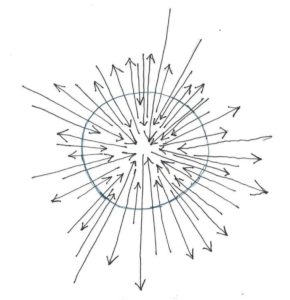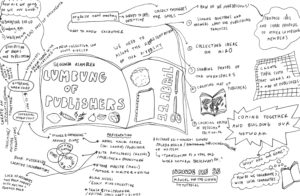lumbung
The lumbung practice enables an alternative economy of collectivity, shared resource building, and equitable distribution. lumbung is anchored in the local and based on values such as humor, generosity, independence, transparency, sufficiency, and regeneration.
After ruangrupa was invited to be the Artistic Direction of documenta fifteen, the collective, in turn, invited documenta to be part of its ekosistem. To this end, ruangrupa then established ruruHaus in Kassel as a local meeting point, living room, and laboratory. The collective is engaging intensively with Kassel’s ekosistem. Not only during but also leading up to and beyond the 100 days of the exhibition. Thus, in addition to the development of new sustainability models, the establishment of lasting relationships is at the core of this documenta.
For ruangrupa, lumbung is not a concept, but a practice. This practice changes dynamically through interactions between people. Therefore, documenta fifteen is not theme-based. It is not about lumbung, but it evolves together withlumbung. documenta fifteen is practicing lumbung. This affects the artistic process, which is shaped collectively.
Sharing as a practice
As a structure for storing and collectively managing food, the lumbung serves the long-term well-being of the community through resource sharing and mutual care. ruangrupa continues this tradition in its own practice, and the artists, collectives, organizations, and activists they have invited to documenta fifteen also share their means such as time, space, money, care, ideas, and knowledge.
In addition to an equally distributed production budget, each lumbung member and lumbung artist received an amount reserved for a common pot—a place for shared means to be distributed collectively through a majelis system. majelis is an Indonesian term for an assembly established at documenta fifteen. Therefore, the individual artists and collectives do not work separately from one another; instead they engage in a collaborative working process.
documenta fifteen is not a static, curated exhibition that remains the same throughout the 100 days. Instead, the venues are constantly changing: they are places in which to meet, discuss, and learn. Exhibition buildings become living rooms, and together the artists decide how to use each venue. Through this process, the rooting of artistic practice in daily life is made tangible.
documenta fifteen seeks to test alternative approaches to economy, collectivity, and sustainability through the practice of lumbung. Even if this approach is not visible at first glance, it may be noticeable at the venues and in the programs.

Iswanto Hartono, lumbung drawing, 2020



















